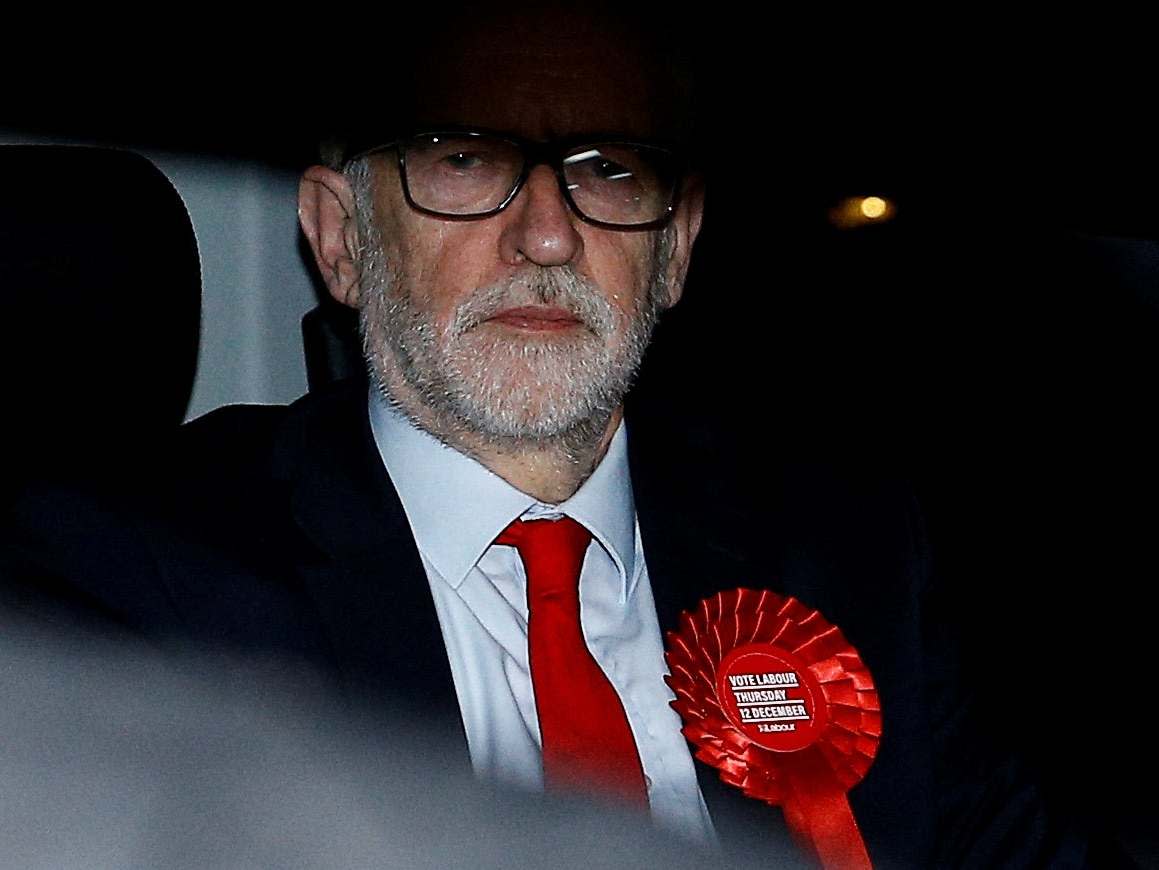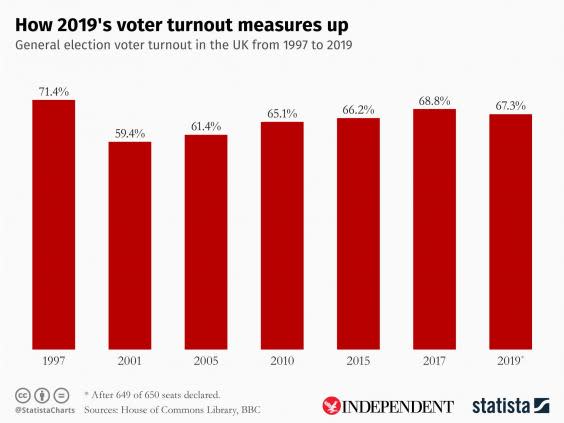Labour won more votes in the general election than in Tony Blair's 2005 victory

Voter turnout fell in this week’s general election compared to 2017’s snap poll.
With 649 of parliament’s 650 constituencies reporting results, turnout was 67.25 per cent, a 1.49-per-cent drop on two years ago.
In an interesting twist, Labour managed to record more votes than it achieved in Tony Blair’s 2005 election victory – with 10,292,354 compared to 9,566,618.
Nonetheless, it suffered a huge number of losses as Boris Johnson notched the Conservative Party‘s best result since 1987.
Tellingly, the share of the vote won by Jeremy Corbyn’s party lagged behind Mr Blair’s result 14 years ago by three percentage points – and fell behind his own result from 2017 by nearly eight points.
Overall, 31,960,517 people voted this year, significantly more than the 27,148,975 who cast a ballot in 2005. But Mr Corbyn only won 725,736 of the additional 4,811,542 votes available.
“Corbyn was a disaster on the doorstep. Everyone knew that he couldn’t lead the working class out of a paper bag,” said Labour’s former home secretary Alan Johnson.
Mr Corbyn said a “period of reflection” would take place before he stepped down as leader.

Brexit is widely seen as having contributed to the surge in support for the Tories.
Turnout in some seats was huge, with Mole Valley in Surrey recording 76.1 per cent of registered voters casting a ballot.
In other places – like Watford in Hertfordshire, with 45.5 per cent turnout – fewer than half showed up at a polling station.
Labour’s share of the vote in 2010 was 29 per cent, and under Ed Miliband in 2015 hit 30.4 per cent.
Read more
DUP suffers bruising night as nationalists gain upper hand in NI

 Yahoo News
Yahoo News 
